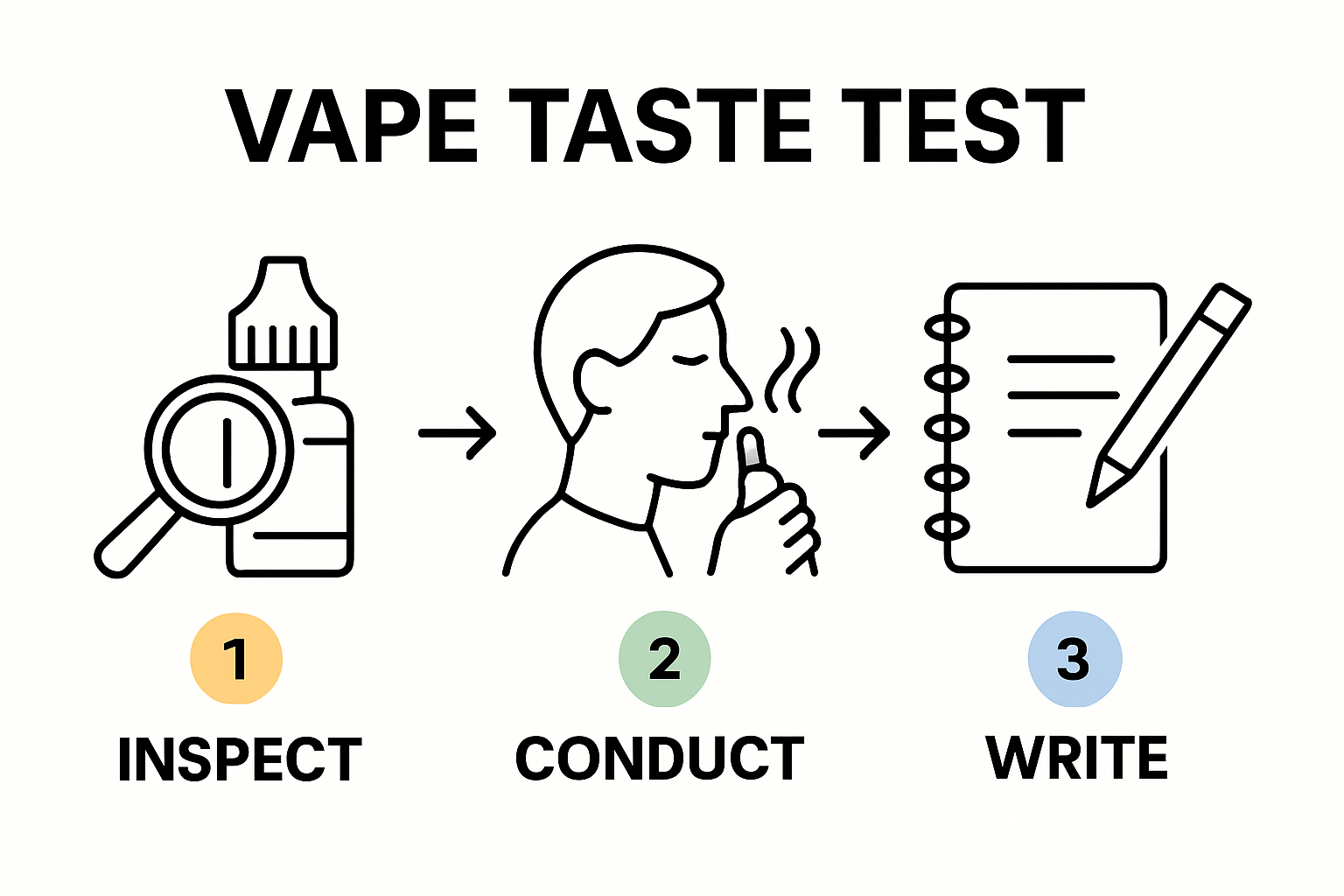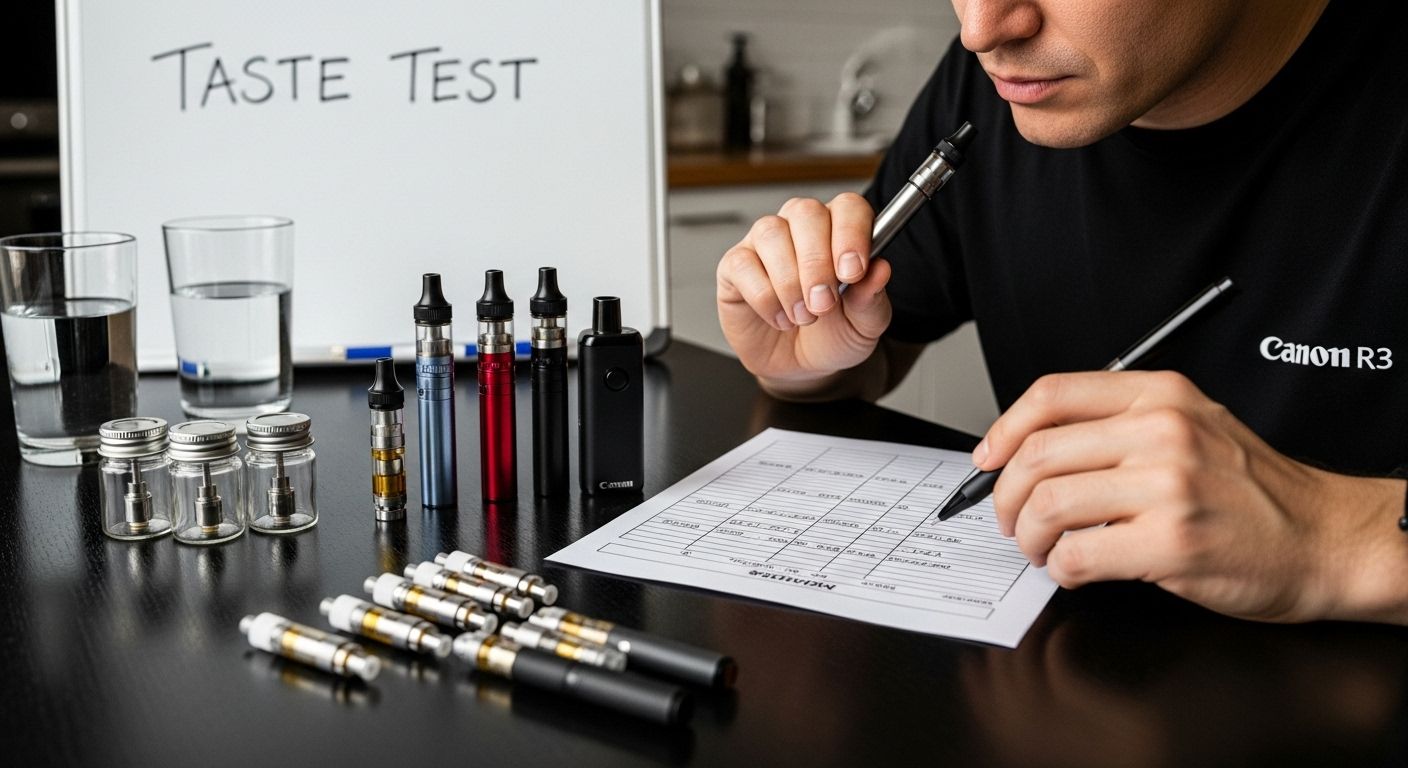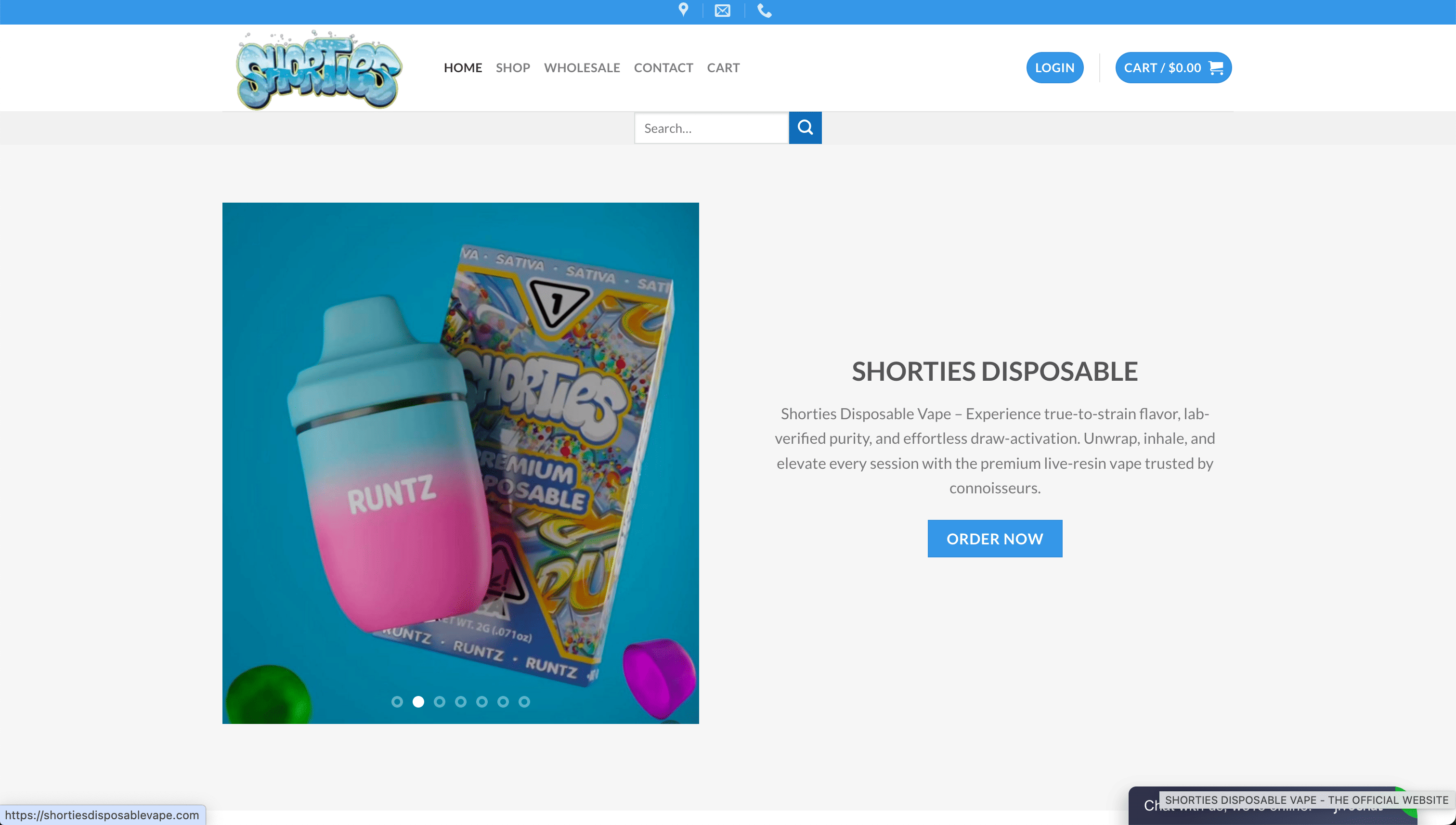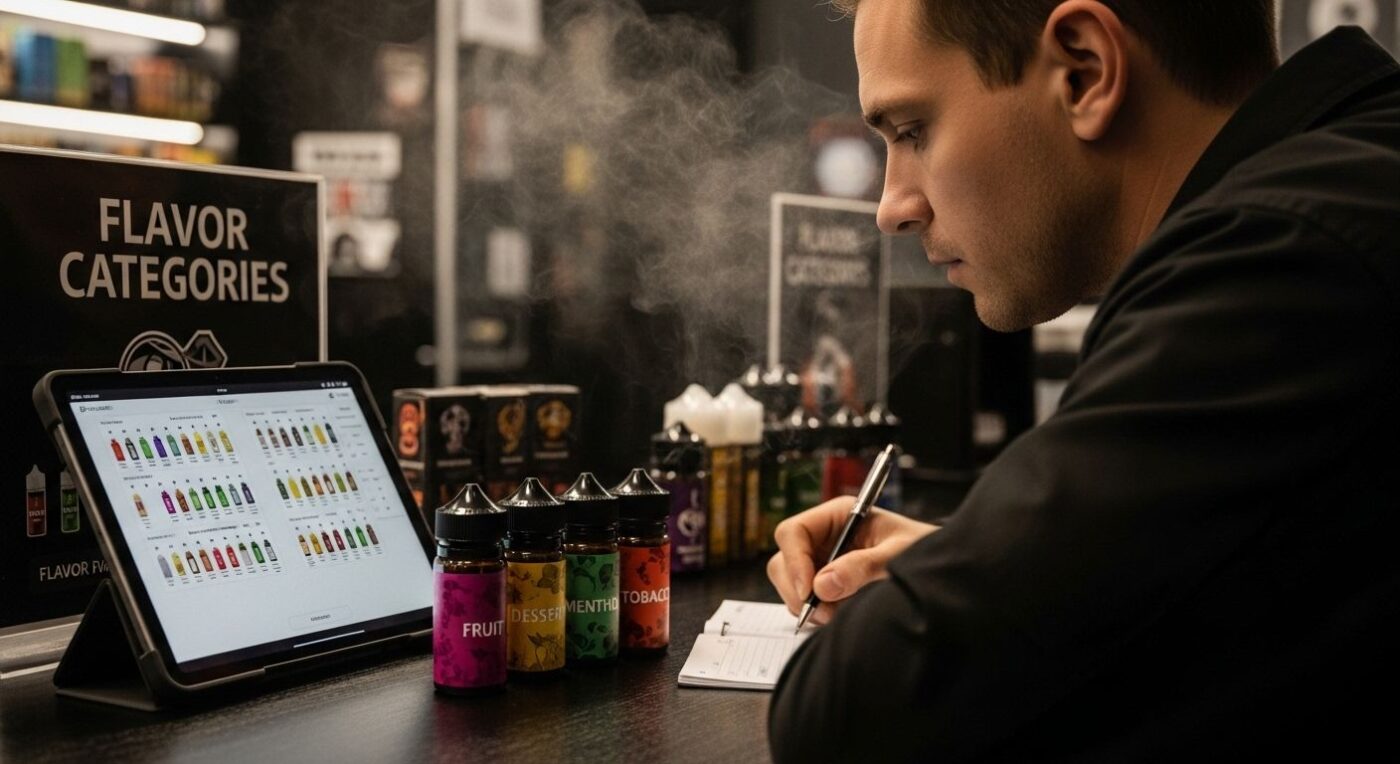Blog
How to Explain Vape Flavors: A Step-by-Step Guide
Vape flavors are more than just sweet clouds or clever packaging. Nearly 67 percent of e-cigarette users say fruit flavors are their top pick, beating every other category by a mile. Most people think describing vape flavors is just about listing fruit or dessert notes. The real art is capturing the memories, sensations, and personal journeys that each puff delivers.
Table of Contents
- Step 1: Identify Popular Vape Flavor Categories
- Step 2: Research Flavor Profiles And Descriptions
- Step 3: Conduct Taste Tests For Authentic Experience
- Step 4: Compare And Contrast Different Flavor Options
- Step 5: Explain Flavors To Your Audience With Clarity
Quick Summary
| Key Point | Explanation |
|---|---|
| 1. Identify key vape flavor categories | Understand popular categories like fruit, dessert, and menthol for better flavor communication. |
| 2. Conduct thorough flavor research | Use scientific methods to explore flavor profiles and engage with sensory nuances. |
| 3. Perform organized taste tests | Taste testing enhances personal flavor understanding and allows for precise descriptions. |
| 4. Compare flavors systematically | Create a structured comparison matrix to evaluate and articulate flavor differences. |
| 5. Communicate flavors effectively | Use relatable language and emotional storytelling to connect with your audience. |
Step 1: Identify Popular Vape Flavor Categories
Understanding vape flavor categories is the foundational step in effectively explaining these complex sensory experiences. When exploring how to explain vape flavors, you’ll want to recognize the primary flavor classifications that resonate with most enthusiasts. Flavor categorization helps create a structured approach to describing and understanding different vaping experiences.
The primary vape flavor categories typically encompass several distinct groups that appeal to different preferences. Fruit flavors represent the most popular segment, accounting for nearly 67% of e-cigarette flavor preferences among users. These vibrant options range from single fruit profiles like strawberry and mango to complex fruit blend combinations that offer intricate taste experiences. Next, dessert and sweet flavors emerge as a significant category, including variations like vanilla, chocolate, caramel, and cream-based profiles that mimic beloved treats.
According to research from the National Center for Biotechnology Information, the flavor landscape extends beyond fruits and desserts. Menthol and mint flavors represent another substantial category, providing a cool, crisp sensation that many users find refreshing. Tobacco flavors offer a more traditional experience for those transitioning from conventional cigarettes, while specialty categories like coffee, tea, and even alcohol-inspired flavors provide unique alternatives for adventurous vapers.
When explaining vape flavors, focus on describing the sensory journey each category provides. Fruit flavors might evoke memories of fresh produce or tropical vacations. Dessert flavors can transport users to childhood memories of baking with family. Menthol variants offer a clean, invigorating sensation, while tobacco flavors maintain a connection to traditional smoking experiences. Learn more about our flavor exploration, where we dive deep into unique flavor profiles that challenge traditional expectations.
Mastering flavor categories requires understanding that individual experiences vary. What tastes extraordinary to one person might seem unremarkable to another. Encourage exploration and emphasize that flavor appreciation is deeply personal and subjective. By providing a comprehensive overview of these categories, you empower individuals to navigate the rich, diverse world of vape flavors with confidence and curiosity.
To help readers understand the different vape flavor categories, here is a summary table comparing each category by its description and the sensory journey it offers.
| Flavor Category | Description | Example Sensory Journey |
|---|---|---|
| Fruit | Single or blended fruit notes, vibrant and sweet | Evokes fresh produce or tropical trips |
| Dessert & Sweet | Vanilla, chocolate, caramel, cream-based flavors | Reminiscent of baking or sweet treats |
| Menthol & Mint | Cool, crisp, refreshing mint and menthol options | Clean, invigorating sensation |
| Tobacco | Traditional, earthy, or robust tobacco profiles | Familiar to cigarette transitions |
| Specialty | Coffee, tea, or alcohol-inspired unique flavors | Alternative, adventurous experiences |
Step 2: Research Flavor Profiles and Descriptions
Researching flavor profiles transforms your ability to communicate the nuanced world of vape experiences. Detailed flavor exploration requires a systematic approach that goes beyond simple taste descriptions. Your goal is to develop a comprehensive understanding that captures the intricate sensory journey each flavor represents.
Begin by examining the molecular composition and aromatic characteristics of different flavor categories. According to research from the National Library of Medicine, flavors like strawberry and vanilla contain unique chemical compounds that contribute to their distinctive taste profiles. Professional flavor researchers use complex sensory mapping techniques that break down flavors into primary notes, undertones, and aromatic components. For instance, a fruit flavor isn’t just “strawberry” but a complex blend of ethyl acetate, isoamyl acetate, and specific molecular structures that create the perception of sweetness and freshness.
Professional flavor description involves multiple sensory dimensions: initial taste, aftertaste, aroma intensity, and how the flavor evolves during consumption. When describing a dessert flavor like apple fritter, you want to capture not just the sweetness, but the layered experience of warm pastry, cinnamon undertones, and the subtle caramelization that makes the flavor memorable. Explore our flavor complexity to understand how intricate flavor profiles can be.
To develop robust flavor descriptions, engage multiple research strategies. Read professional flavor journals, attend tasting workshops, and study sommelier techniques for describing complex taste experiences. Listen to experienced vapers discuss their favorite flavors, noting the descriptive language they use. Pay attention to how they articulate subtle differences between similar flavors. A mint flavor, for example, can range from crisp and cool to warm and herbal.
Verify your flavor research by cross-referencing descriptions from multiple sources and testing flavors personally.

A comprehensive flavor profile should communicate not just taste, but the emotional and sensory journey the flavor provides. The most effective descriptions transform a simple taste experience into a narrative that resonates with the listener’s own sensory memories and expectations.
Step 3: Conduct Taste Tests for Authentic Experience
Taste testing is the critical bridge between theoretical flavor knowledge and genuine sensory understanding. This step transforms your academic research into a lived experience, allowing you to articulate vape flavors with genuine expertise. The goal is to develop a nuanced, personal perspective that goes beyond generic descriptions.
Prepare for your taste test by creating a structured sensory evaluation environment. Professional flavor experts recommend using a clean palate and neutral surroundings to maximize sensory perception. Begin by hydrating and avoiding strong foods or beverages that might interfere with your taste receptors. Approach each flavor test with a methodical mindset, treating it like a professional sommelier would approach wine tasting. This means paying attention to initial impressions, mid-palate experiences, and lingering aftertastes.
According to research in chemosensory evaluation, multiple sensory dimensions contribute to flavor perception. When conducting your taste test, engage all your senses. Notice the aroma before inhaling, observe the vapor density, and pay attention to how the flavor evolves from first contact to complete dissipation. Explore our diverse flavor range to understand the complexity of flavor experiences.
Document your findings meticulously. Create a personal flavor journal that captures not just taste descriptions, but emotional and memory associations.

Note how a particular flavor might remind you of a childhood dessert or a tropical vacation. Professional flavor researchers understand that taste is deeply personal and goes far beyond simple chemical descriptions. Your notes should include sensory details like vapor smoothness, flavor intensity, and how the taste changes throughout the experience.
Verify the authenticity of your taste test by comparing your personal observations with professional flavor descriptions and seeking feedback from other enthusiasts. A comprehensive flavor understanding emerges from multiple perspectives. Remember that flavor perception is subjective, and what resonates powerfully with one person might feel completely different to another. The key is developing a vocabulary that communicates your unique sensory journey while remaining accessible to others seeking to understand the rich world of vape flavors.
Below is a checklist table summarizing key steps and verification tips for conducting authentic vape flavor taste tests, helping readers ensure thorough and reliable results.
| Action Step | Purpose | Verification Tip |
|---|---|---|
| Prepare a clean palate | Maximize sensory perception | Hydrate and avoid strong foods beforehand |
| Create neutral environment | Minimize interference | Use a comfortable, aroma-free setting |
| Document observations | Track experiences and insights | Record notes in a dedicated flavor journal |
| Engage multiple senses | Deepen understanding of flavor profile | Notice aroma, vapor density, and aftertaste |
| Compare findings | Ensure authenticity and perspective | Cross-reference with professional descriptions |
| Seek feedback from others | Add perspective and depth | Discuss with fellow enthusiasts |
Step 4: Compare and Contrast Different Flavor Options
Comparing and contrasting vape flavors is an art form that requires a systematic and nuanced approach. This step transforms your individual taste experiences into a comprehensive understanding of flavor diversity. Your goal is to develop a sophisticated framework for evaluating and communicating the subtle differences between various flavor profiles.
Begin by organizing your flavor comparisons across multiple dimensions. According to research on flavor preferences, different flavor categories appeal to different user groups. Create a comparison matrix that evaluates flavors based on characteristics like sweetness intensity, vapor density, aromatic complexity, and aftertaste duration. Professional flavor analysts look beyond simple taste descriptors, examining how flavors interact with individual sensory perceptions.
Develop a scoring system that captures the multifaceted nature of flavor experiences. For each flavor, rate elements such as initial impact, mid-palate development, and lingering sensations. Consider how fruit flavors differ from dessert profiles not just in taste, but in how they evolve during consumption. Explore our flavor spectrum to understand the nuanced variations between different flavor categories.
Pay special attention to how flavors interact with individual physiological responses. Some people experience certain flavor notes more intensely due to genetic variations in taste receptors. A flavor that seems mild to one person might be overwhelmingly complex to another. This subjective nature makes comprehensive flavor comparison both challenging and fascinating. Document these personal variations in your comparative analysis, recognizing that flavor perception is deeply individual.
To verify the comprehensiveness of your comparison, seek input from other enthusiasts. Create a collaborative flavor exploration approach where multiple perspectives contribute to a more rounded understanding. Look for patterns in how different people describe similar flavors, noting the unique language and sensory associations each individual brings to the experience. The most effective flavor comparisons go beyond objective measurements, capturing the emotional and memory-driven aspects of taste that make each flavor unique.
Step 5: Explain Flavors to Your Audience with Clarity
Communicating flavor experiences requires a delicate balance between technical precision and emotional storytelling. Your ability to translate complex sensory perceptions into accessible language determines how effectively your audience will understand and connect with different vape flavor profiles. The goal is to create descriptions that are both scientifically accurate and deeply evocative.
According to standardized sensory evaluation guidelines, developing a precise vocabulary is crucial for clear flavor communication. Start by crafting descriptions that engage multiple sensory dimensions. Instead of simply stating a flavor is “sweet,” describe how the sweetness unfolds – is it a bright, initial burst like fresh strawberries, or a deep, lingering caramel warmth? Professional flavor communicators understand that great descriptions transport listeners into a sensory experience.
Explore our flavor complexity to understand how intricate flavor narratives can be constructed. Your descriptions should capture not just taste, but the entire sensory journey. Consider the flavor’s progression: How does it feel when first inhaled? What memories or emotions might it evoke? What subtle notes emerge as the flavor develops? These nuanced details transform a basic description into a compelling sensory narrative.
Understand your audience’s background and tailor your language accordingly. A flavor description for a vaping enthusiast will differ dramatically from one designed for someone new to the experience. Use relatable analogies that bridge technical details with personal experience. For a dessert flavor, you might compare it to a cherished childhood memory of baking with a grandparent, or describe how it captures the essence of a favorite restaurant’s signature dish.
Verify the effectiveness of your flavor explanations by testing them with diverse listeners. A truly exceptional flavor description should resonate across different backgrounds, creating a universal sensory connection. Pay attention to how people react – do their eyes light up? Do they share their own sensory memories? The most powerful flavor communications don’t just describe taste; they create shared emotional experiences that transcend simple sensory perception.
Discover Real Vape Flavor Mastery With Shorties Disposable
If you struggle to find the words to describe what you taste, you are not alone. Many adults interested in vaping want to confidently explain flavor categories, recognize detailed flavor profiles, and truly understand what makes each puff unique. The article, “How to Explain Vape Flavors: A Step-by-Step Guide” addresses common challenges like identifying flavor notes, conducting authentic taste tests, and building a vocabulary for sharing these experiences.

Now you can turn knowledge into experience. Every Shorties Disposable vape is designed to help you put theory into practice. Browse our live-resin flavor lineup to explore detailed product descriptions inspired by real taste evaluations. You get clear lab reports, trusted authentication, and a recycling program that ensures you enjoy sustainability along with superior taste. Ready to become an expert at savoring and explaining vape flavors? Visit Shorties Disposable now and experience authentic cannabis flavors described the right way.
Frequently Asked Questions
What are the main categories of vape flavors?
The primary vape flavor categories include fruit, dessert and sweet, menthol and mint, tobacco, and specialty flavors like coffee or alcohol-inspired options. Each category caters to different taste preferences and experiences.
How can I effectively describe vape flavors?
When describing vape flavors, focus on multiple sensory dimensions: initial taste, aftertaste, aroma intensity, and how the flavor evolves. Engaging emotional and memory associations can give a richer context to your descriptions.
What methods can I use for taste testing vape flavors?
To conduct effective taste tests, create a neutral environment with a clean palate. Hydrate beforehand, avoid strong foods, and systematically evaluate each flavor’s initial impact, mid-palate experience, and lingering aftertaste while documenting observations in a flavor journal.
How can I compare different vape flavors?
To compare vape flavors, create a comparison matrix evaluating factors like sweetness intensity, vapor density, and aftertaste duration. Develop a scoring system for each flavor, noting individual sensory perceptions that can vary from person to person.
Recommended
- Shorties Disposable Lava Cake
- Shorties Disposable Apple Fritter
- Shorties Disposable Runtz
- Shorties Disposable Gelato 42

